Tomato Soup Cake
Okay, hear me out. Yes, this cake has tomato soup in it. And yes, it’s absolutely incredible. If you’re raising an eyebrow right now, I get it—I was skeptical too. But this vintage recipe creates one of the most moist, perfectly spiced cakes you’ll ever taste, with no hint of tomato flavor. Just warm spices, tender crumb, and cream cheese frosting that’ll make you forget all about its unconventional secret ingredient.
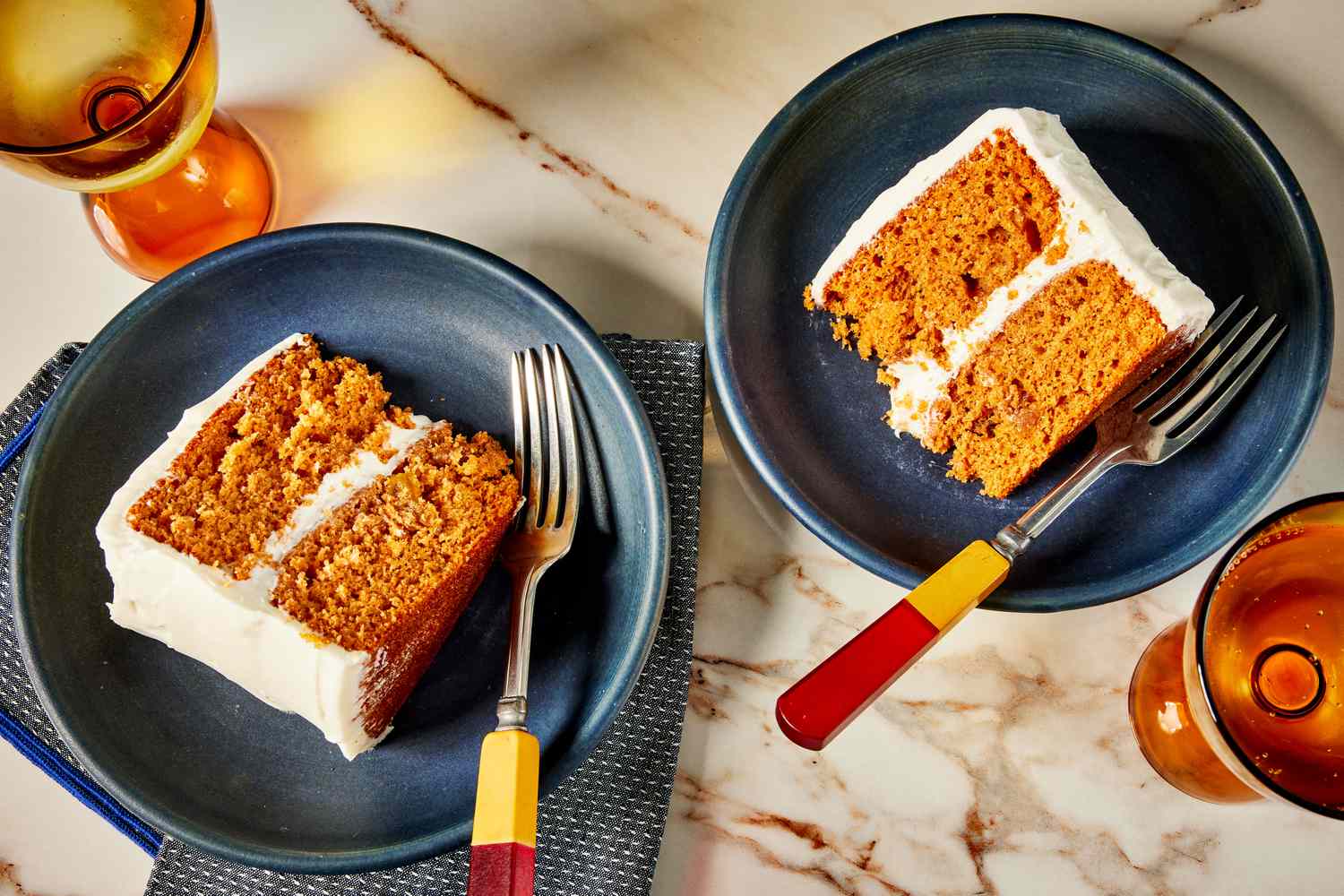
The magic of Tomato Soup Cake lies in its chemistry—the acidity in the tomato soup activates the baking soda, creating an incredibly soft texture while the natural sugars caramelize during baking. Combined with a symphony of warm spices like cinnamon, nutmeg, and cardamom, it delivers all the cozy vibes of a spice cake but with a moisture level that’ll keep it fresh for days. Topped with tangy cream cheese frosting, it’s the conversation-starting dessert that’ll have everyone begging for the recipe.
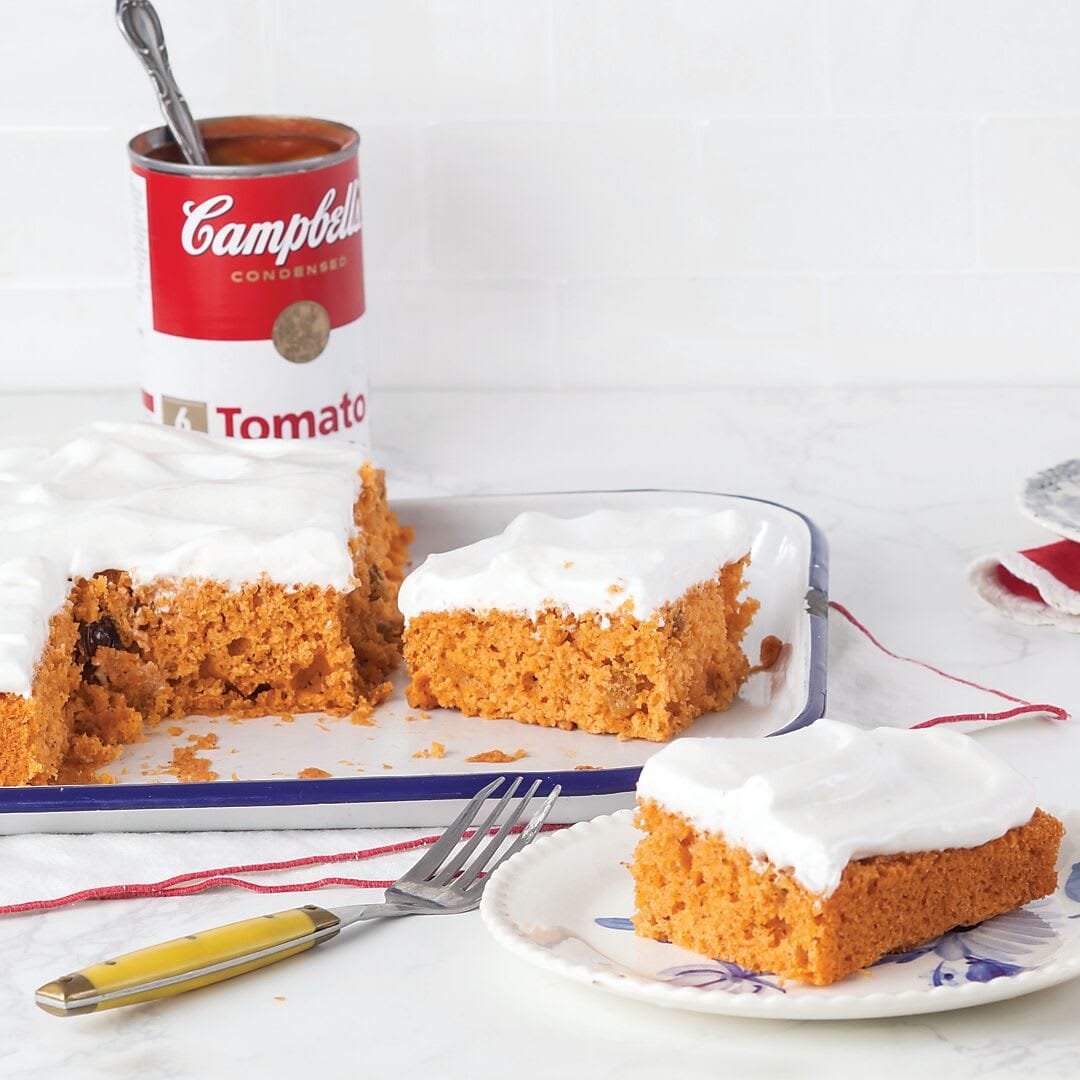
Ingredients
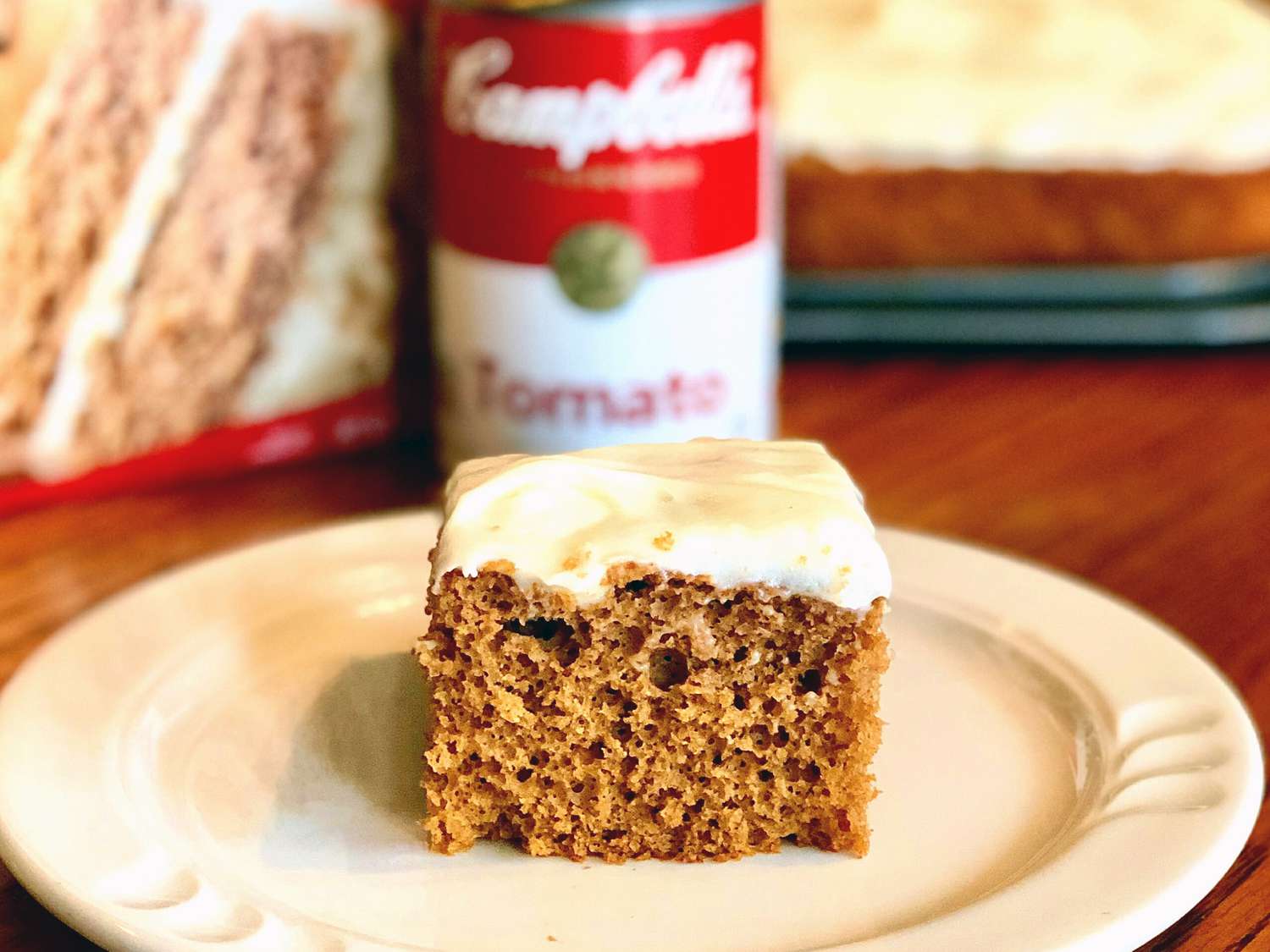
For the Cake:
- Baking spray with flour
- 2 cups (8½ ounces) all-purpose flour
- 2 teaspoons baking powder
- 1 teaspoon ground cinnamon
- ½ teaspoon ground nutmeg
- ¼ teaspoon ground cardamom
- ¼ teaspoon ground allspice
- ¼ teaspoon kosher salt
- 1 cup granulated sugar
- ½ cup (4 ounces) unsalted butter, at room temperature
- 2 large eggs, at room temperature
- 1 (10¾ ounce) can condensed tomato soup
- 1 teaspoon baking soda
- 1 teaspoon vanilla extract
- ½ cup golden raisins (optional)
For the Frosting:
- 1 (8-ounce) package cream cheese, at room temperature
- 6 tablespoons (3 ounces) unsalted butter, at room temperature
- 3 cups (9¾ ounces) powdered sugar, sifted
- 1 teaspoon vanilla extract
- ¼ teaspoon kosher salt
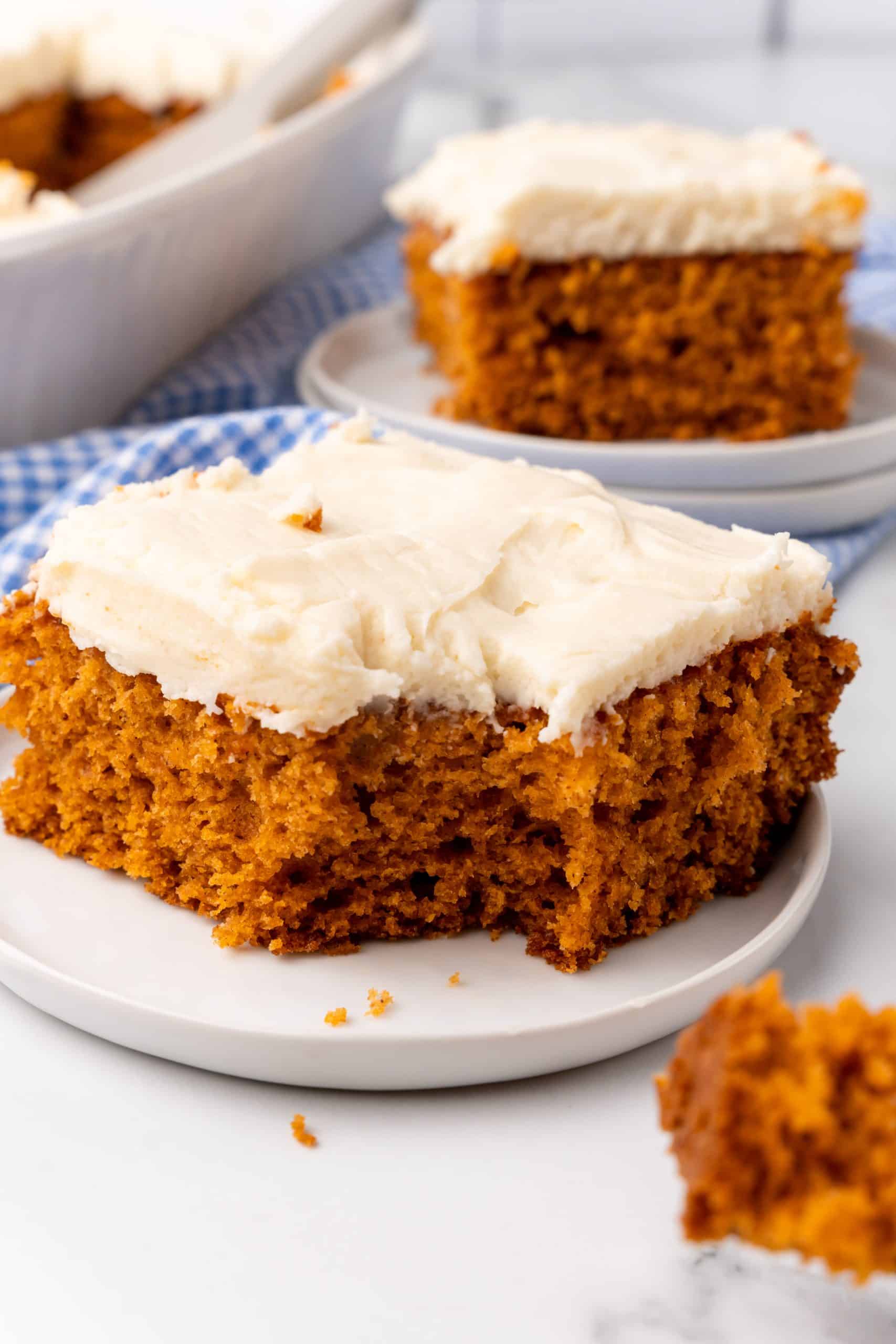
Steps
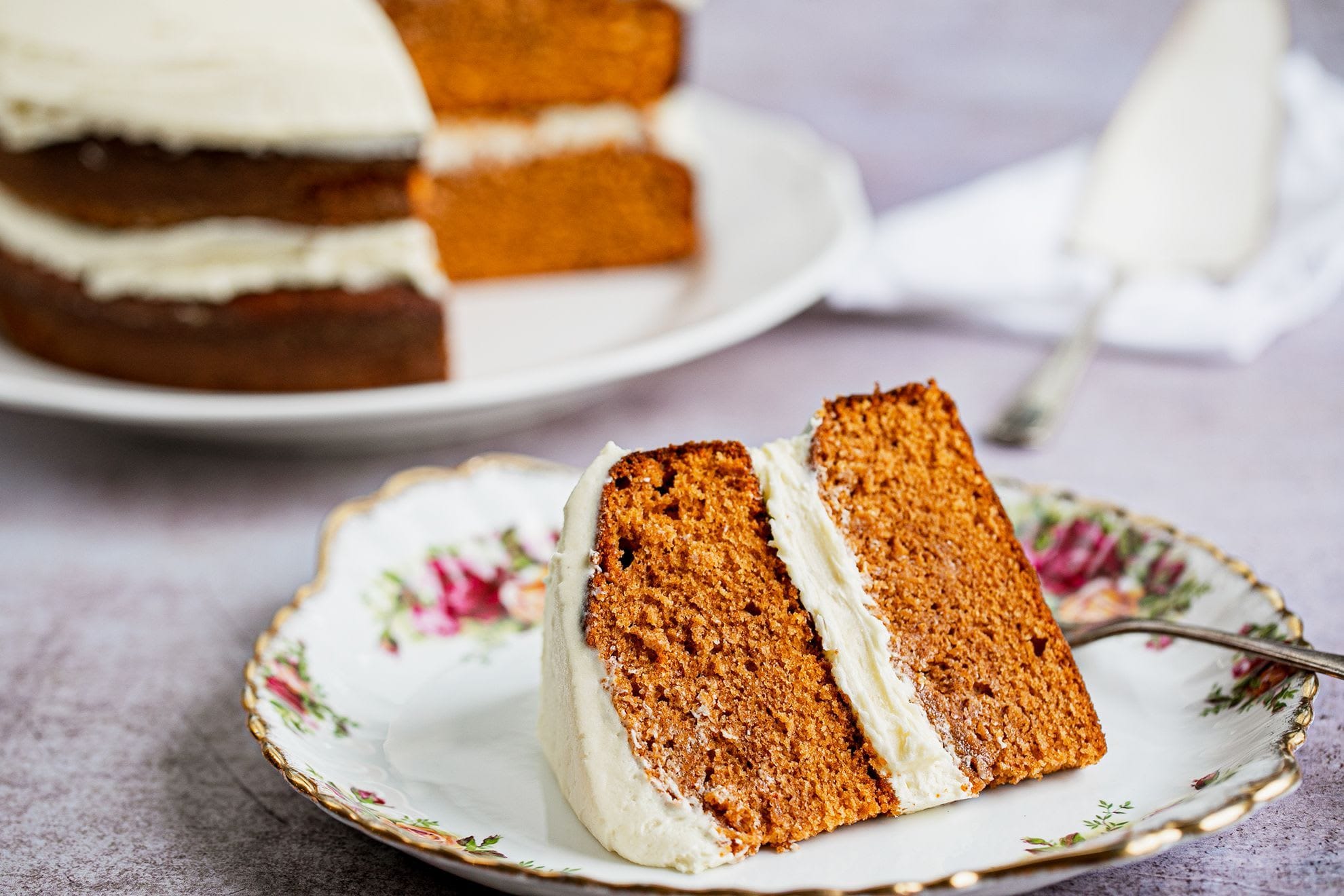
- Prepare the oven and cake pans: Preheat oven to 350°F (175°C). Thoroughly coat 2 (8-inch) round cake pans with baking spray with flour, making sure to get into all corners and up the sides. The proper preparation of your pans is crucial to prevent sticking—if you don’t have baking spray with flour, you can butter the pans and dust with flour.
- Combine dry ingredients: In a medium bowl, whisk together the flour, baking powder, cinnamon, nutmeg, cardamom, allspice, and salt until evenly distributed—about 30 seconds of whisking. Proper mixing ensures the spices are evenly distributed throughout the cake, preventing pockets of intense flavor. Set aside.
- Cream butter and sugar: In a stand mixer fitted with a paddle attachment, beat together sugar and butter on medium-high speed until light and fluffy, 3 to 4 minutes. Don’t rush this step—proper creaming incorporates air into the batter, creating a lighter texture. The mixture should be pale yellow and noticeably increased in volume.
- Add eggs: With mixer on low speed, add eggs one at a time, beating until just combined after each addition (about 20 seconds per egg). Stop to scrape down sides of bowl with a rubber spatula after each addition. Adding eggs one at a time prevents the mixture from curdling and ensures proper incorporation.
- Combine tomato soup and baking soda: In a medium bowl, stir together tomato soup and baking soda. The mixture will immediately begin to fizz and expand—this reaction is creating carbon dioxide bubbles that will help leaven your cake. Let it sit for 30 seconds to fully activate before proceeding.
- Add vanilla and tomato soup mixture: With mixer on low, gradually add vanilla and the tomato soup mixture to the butter mixture, beating until combined, about 1 minute. Don’t worry if the mixture appears to separate or look curdled—this is normal and will resolve once the flour is added.
- Add flour mixture and raisins: With mixer on low, gradually add the flour mixture in three batches, mixing until just combined (20-30 seconds between additions), stopping to scrape down sides of bowl as needed. Overmixing will develop gluten and make your cake tough. If using, fold in the golden raisins with a rubber spatula using gentle folding motions. Divide batter evenly among prepared pans, using a kitchen scale if available for perfect layers, and spread into even layers with an offset spatula.
- Bake cake layers: Place pans in the center rack of preheated oven and bake until a wooden pick inserted in center comes out clean or with a few moist crumbs, 25 to 30 minutes. Check at the 25-minute mark—the cake should spring back when lightly touched in the center. Let cakes cool in pans on a wire rack for 15 minutes exactly—any less and they may fall apart, any more and they might stick.
- Cool cakes: Run a thin knife around the edges of each pan to loosen, then carefully invert cakes onto wire racks. Immediately turn right side up and let cool completely, about 45 minutes. The cakes must be completely cool before frosting or the frosting will melt.
- Beat cream cheese and butter: In a stand mixer fitted with a paddle attachment, beat cream cheese and butter on medium speed until light and fluffy, about 3 minutes. Stop once or twice to scrape down the sides of the bowl. The mixture should be completely smooth with no lumps before proceeding.
- Add powdered sugar, vanilla, and salt: With mixer on low to prevent a sugar cloud, gradually add powdered sugar in three additions. Once incorporated, increase speed to medium-high, and beat until pale and fluffy, 30 seconds to 1 minute. Add vanilla and salt, and beat on low speed until just incorporated, about 30 seconds. The frosting should be smooth and spreadable—if too stiff, add 1-2 teaspoons of milk.
- Frost cake layers: Place one cake layer on a serving plate; spread evenly with 1 cup of the frosting using an offset spatula. For clean edges, place strips of parchment paper under the edges of the cake and remove after frosting is complete.
- Finish frosting the cake: Top with remaining cake layer, and spread top and sides evenly with remaining 1½ cups frosting. For a smooth finish, dip your offset spatula in warm water and dry before final smoothing. Refrigerate, uncovered, until frosting is set, about 30 minutes. Store cake, covered, in refrigerator up to 3 days. For best flavor, allow cake to sit at room temperature for 20-30 minutes before serving.
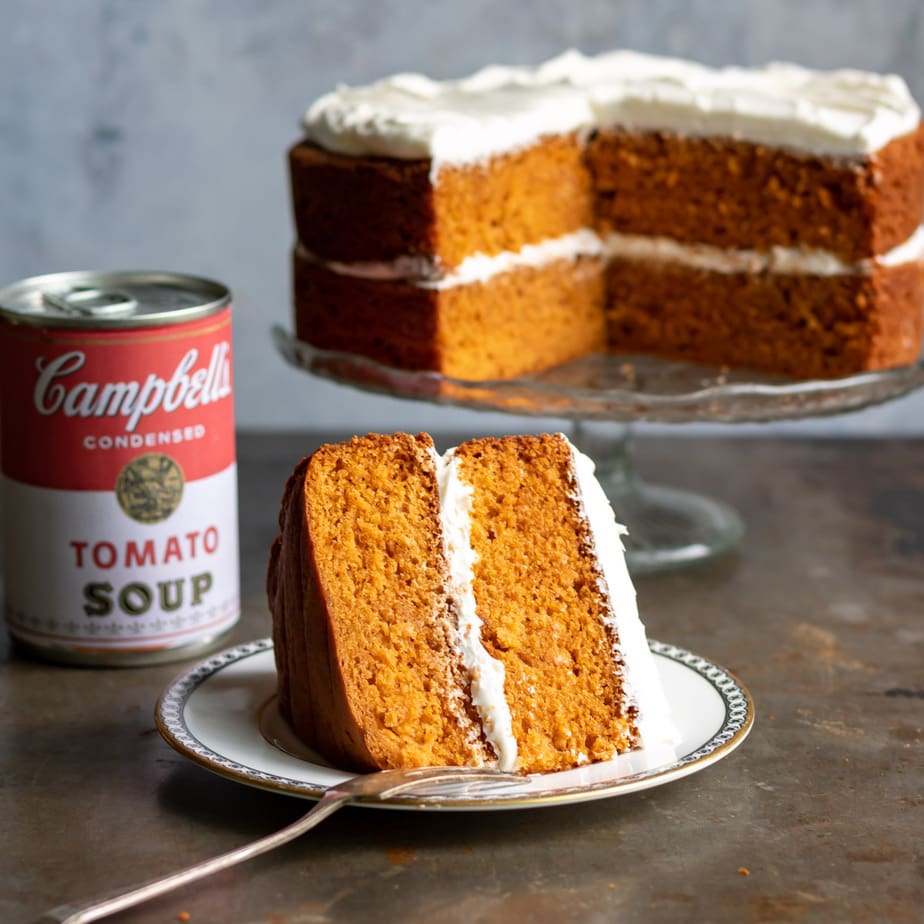
Smart Swaps
- Replace half the butter with ¼ cup unsweetened applesauce for a lighter version with less fat
- Substitute whole wheat pastry flour for half the all-purpose flour to add fiber without significantly changing texture
- Use reduced-fat cream cheese in the frosting to cut calories while maintaining creaminess
- Swap golden raisins for ¼ cup finely chopped dried apricots for a different fruity note
Make It Diabetes-Friendly
- Replace sugar with ¾ cup Swerve Granular or allulose (reduces carbs by approximately 24g per serving)
- Use ¼ cup coconut flour + 1¾ cups almond flour instead of all-purpose flour (reduces carbs by approximately 18g per serving)
- For the frosting, use 2½ cups powdered erythritol instead of powdered sugar
- Serve smaller portions (12 slices instead of 10) and pair with a small protein source to reduce glycemic impact
- Add ½ teaspoon cinnamon to the frosting to enhance sweetness perception without added sugar
Pro Tips
- Room temperature ingredients are non-negotiable for this recipe—cold ingredients won’t incorporate properly
- For perfect layers, weigh the batter as you divide it between pans
- The tomato soup-baking soda mixture will nearly double in volume—use a bowl with plenty of room
- This cake actually tastes better on day two after the flavors have had time to meld
- For cleaner slices, chill the frosted cake for 1 hour, then cut with a knife dipped in hot water and wiped clean between cuts